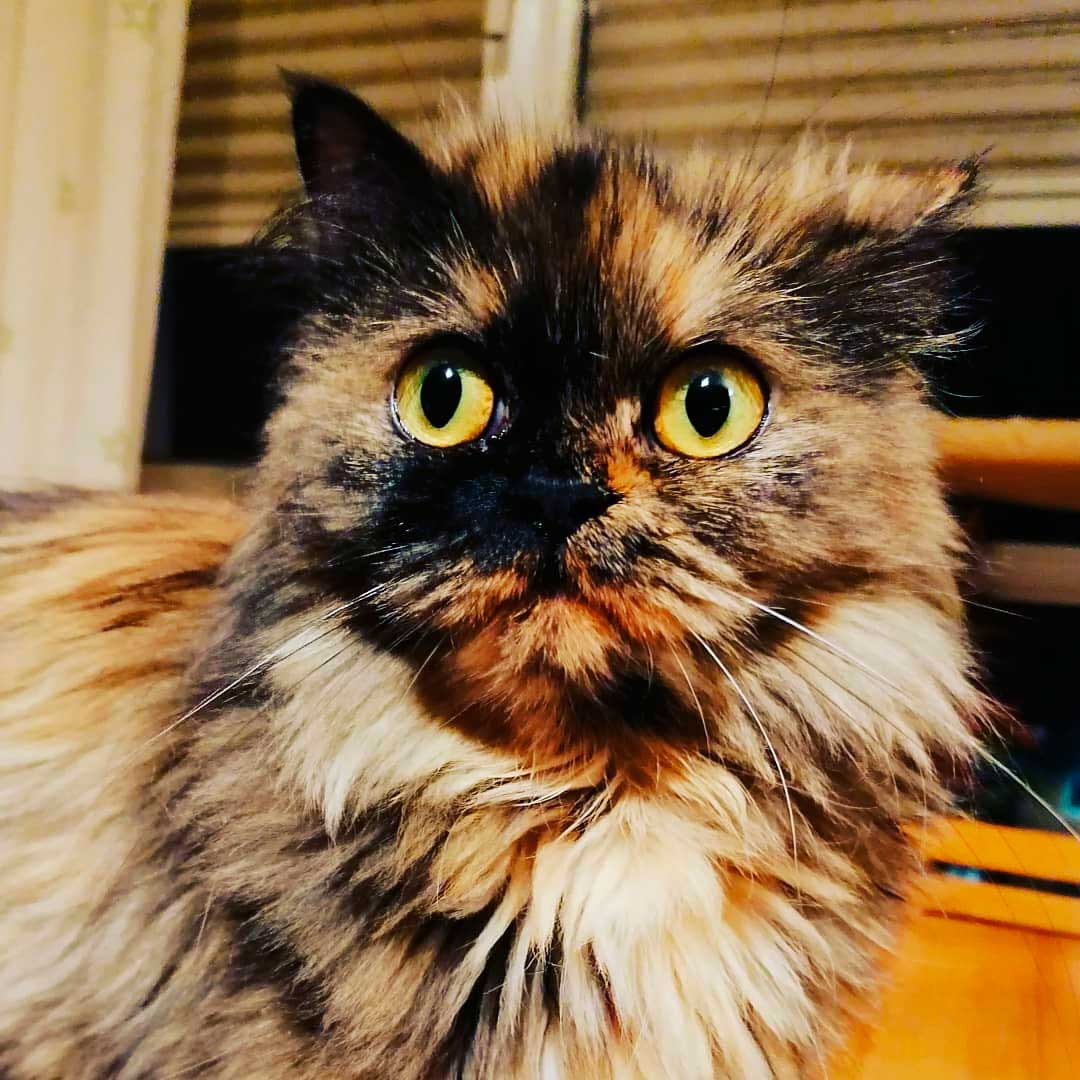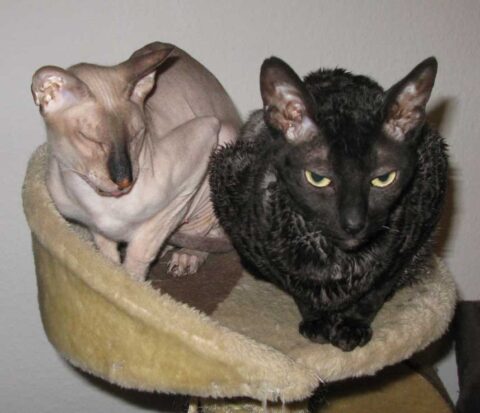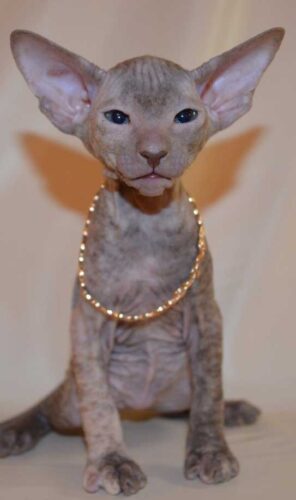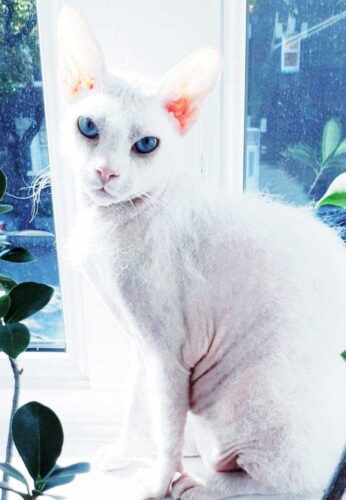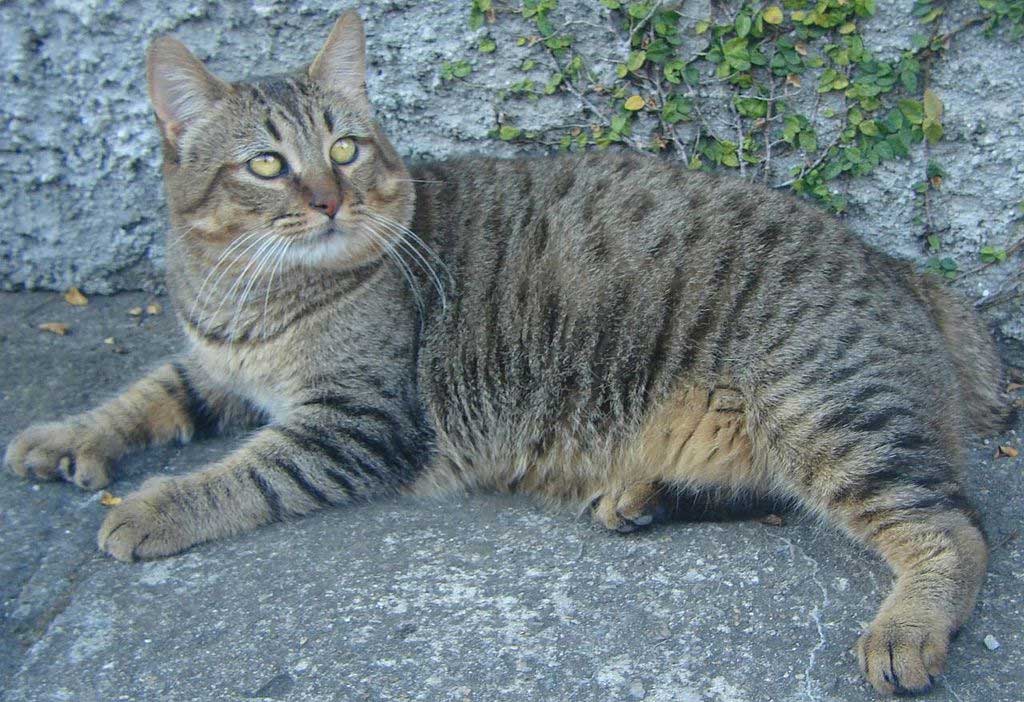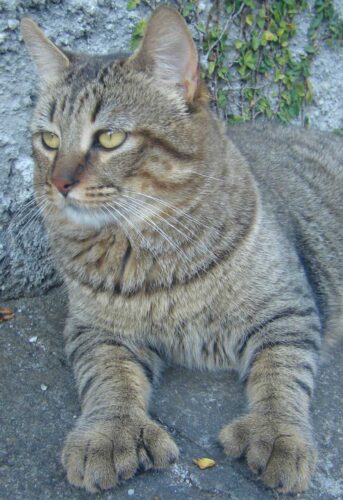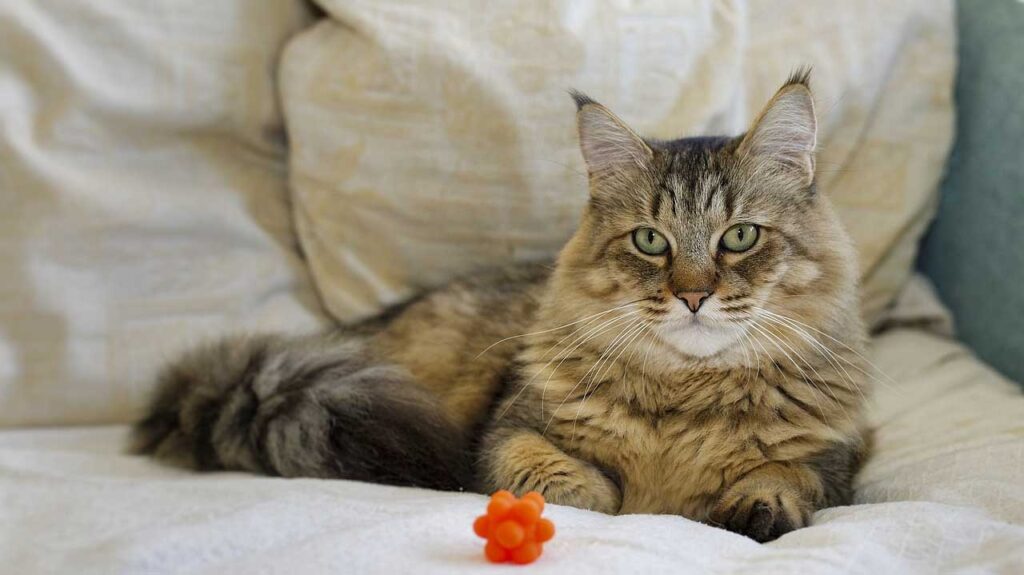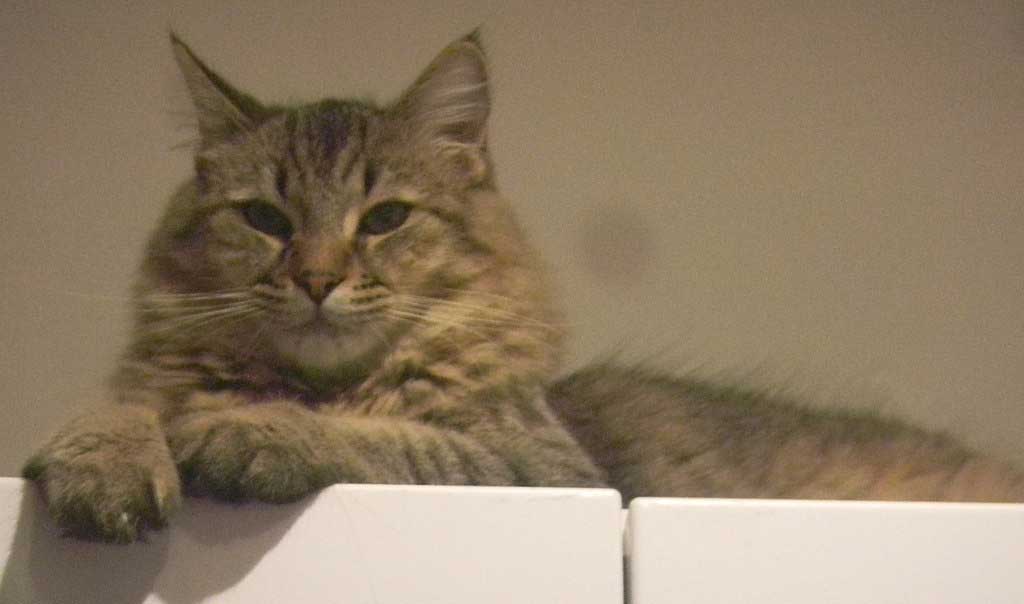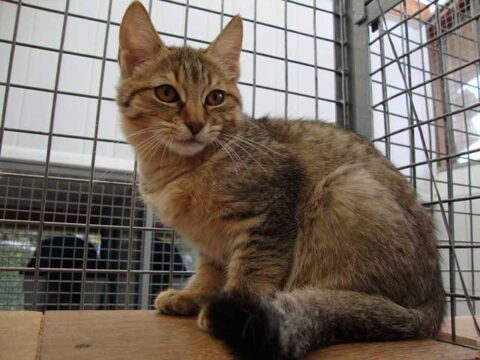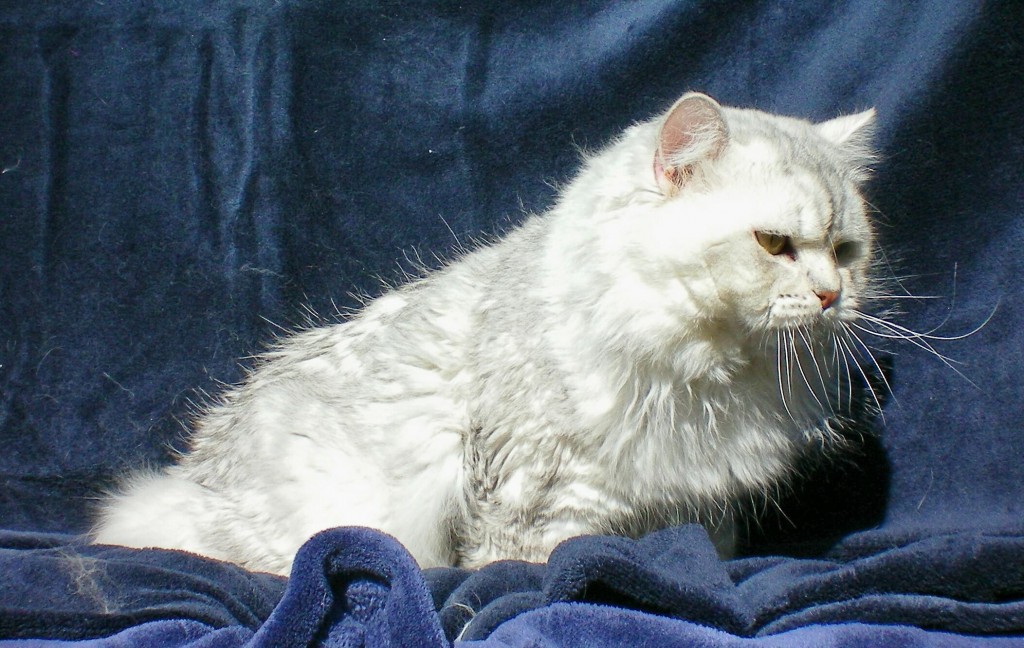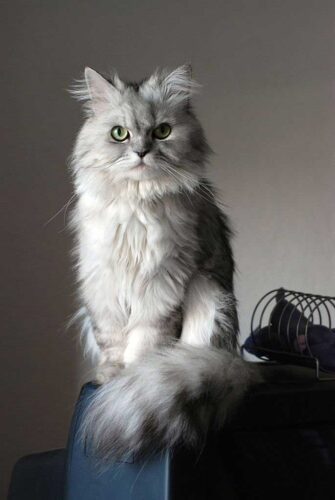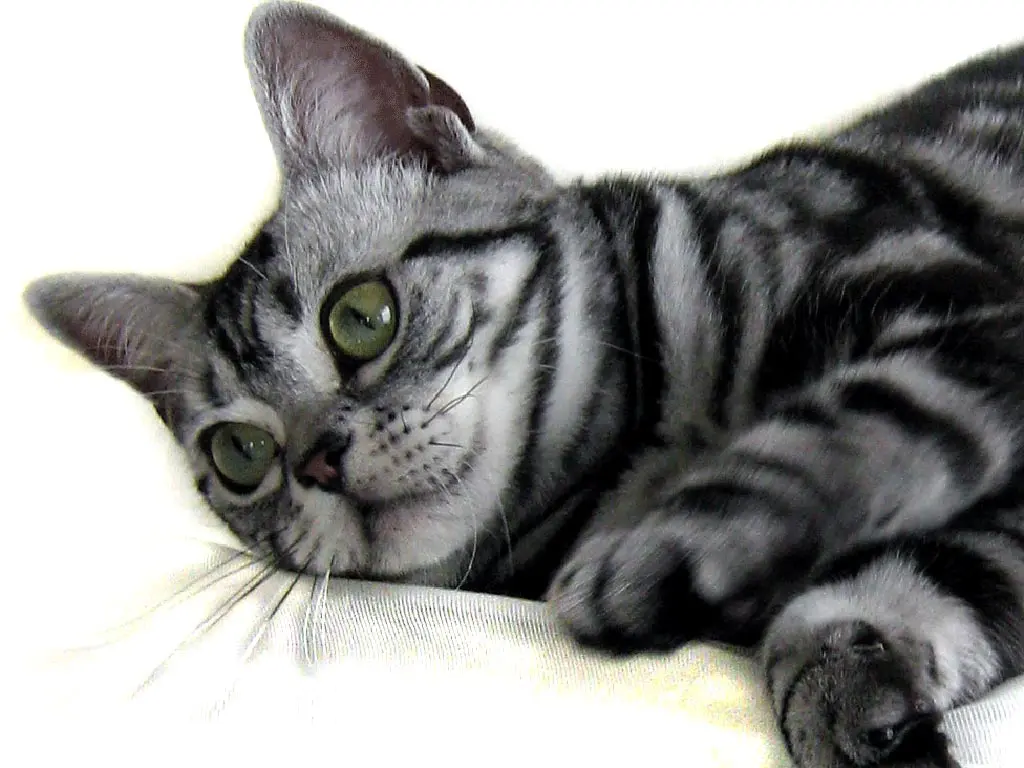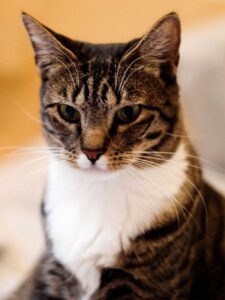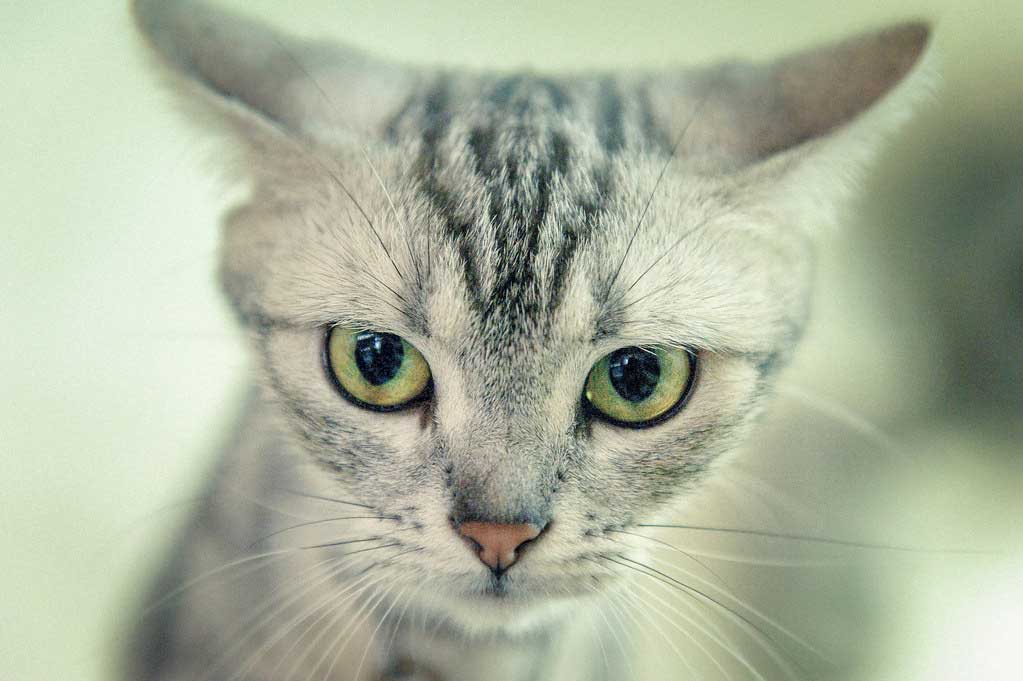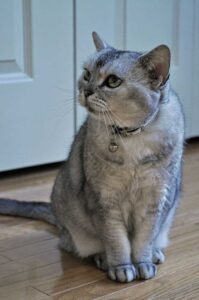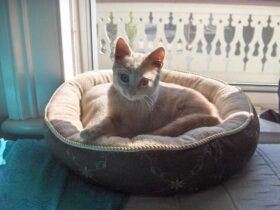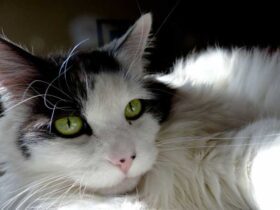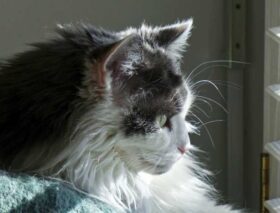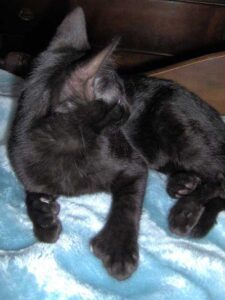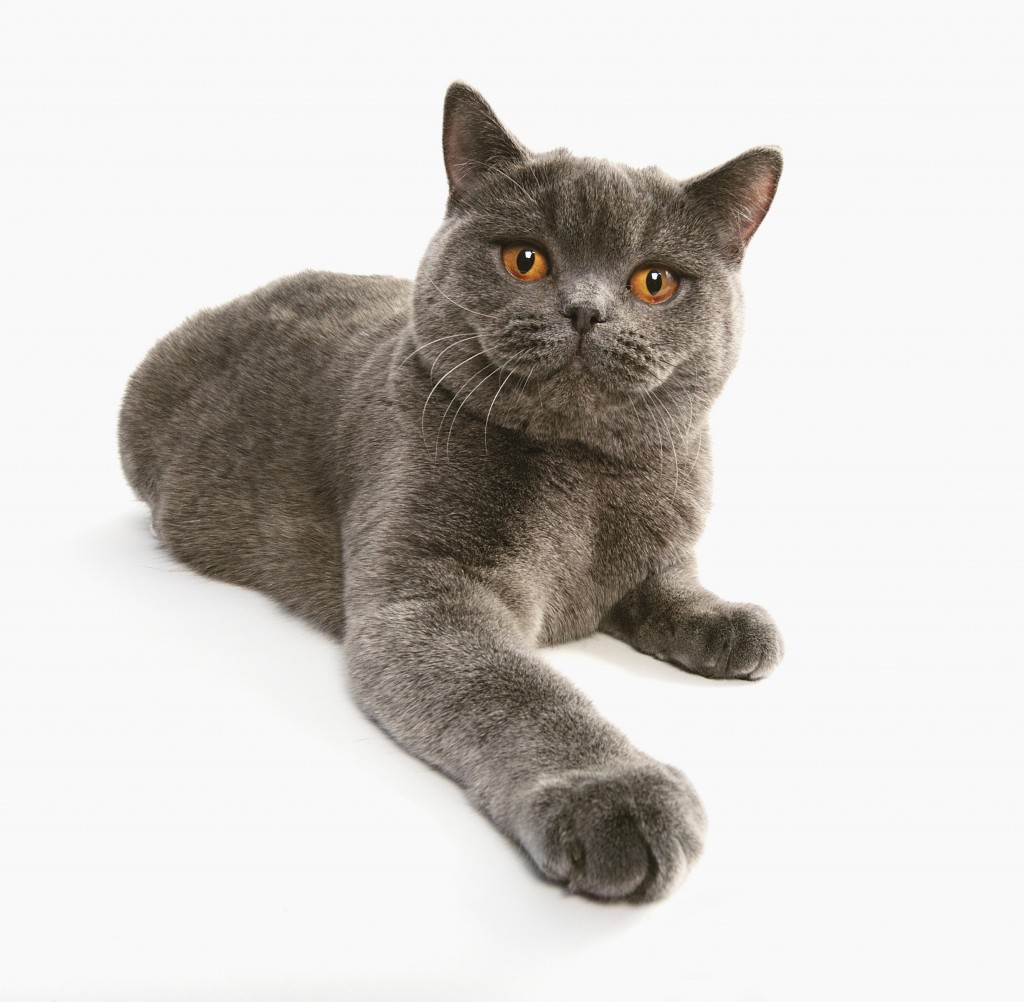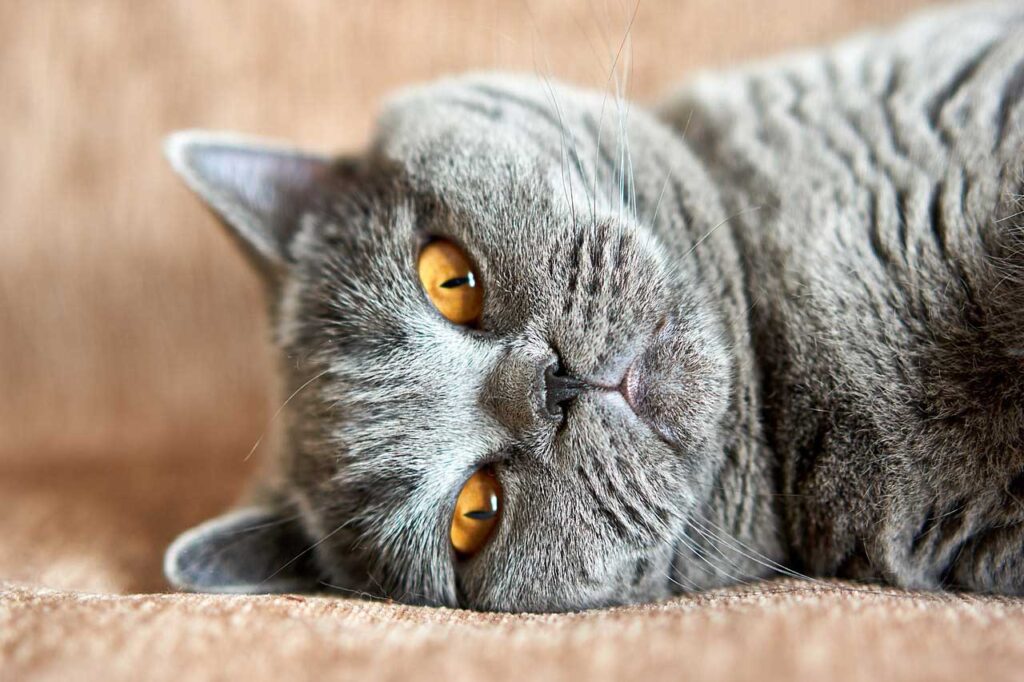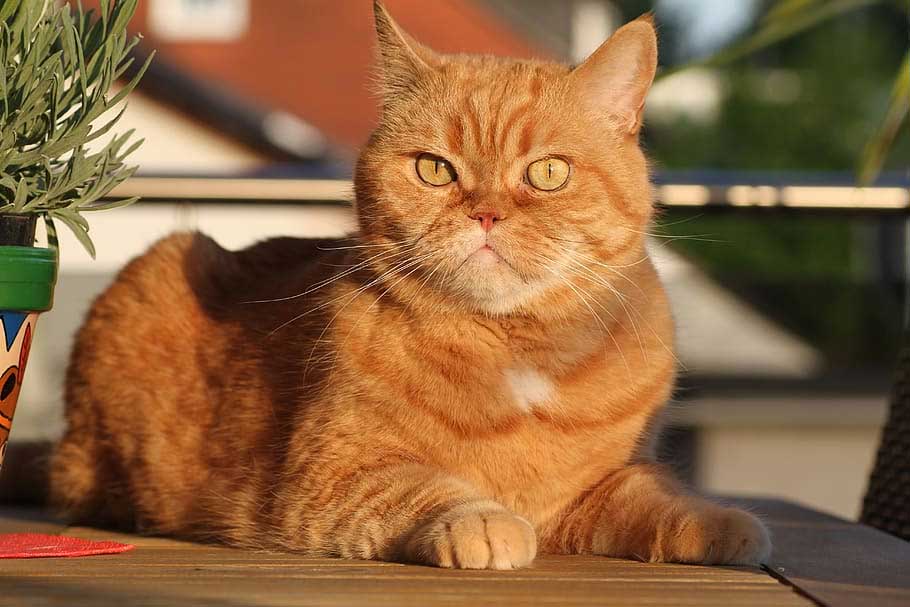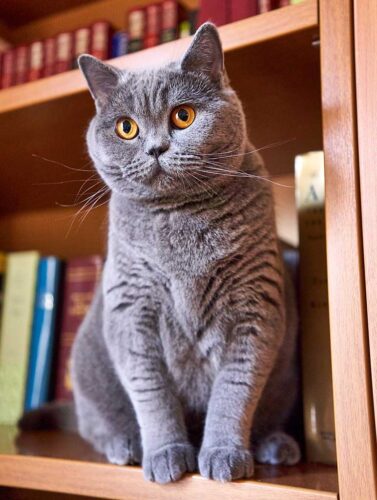Content |
|---|
Characteristics "Persian cat"
Coexistence is important that you have with your new friend. Before considering the acquisition of a cat of the breed "Persian cat" you know certain factors. You must take into account their character, their need for exercise, their interaction with other pets, their care and if you have small children, their level of tolerance towards them.
Joy3.0 out of 5 stars (based on 1 review)
|
Activity level1.0 out of 5 stars (based on 1 review)
|
Friendliness to other pets4.0 out of 5 stars (based on 1 review)
|
|---|---|---|
Friendliness to children4.0 out of 5 stars (based on 1 review)
|
Grooming requirements5.0 out of 5 stars (based on 1 review)
|
Vocality1.0 out of 5 stars (based on 1 review)
|
Need for attention4.0 out of 5 stars (based on 1 review)
|
Affection towards its owners4.0 out of 5 stars (based on 1 review)
|
Docility5.0 out of 5 stars (based on 1 review)
|
Intelligence2.0 out of 5 stars (based on 1 review)
|
Independence2.0 out of 5 stars (based on 1 review)
|
Hardiness2.0 out of 5 stars (based on 1 review)
|
History
The Persian cat it is one of the oldest cat breeds. He is a direct descendant of Turkish Angora cat, native to the cold regions of Central Asia, on the border between Iran and Turkey. The long hair of the Turkish Angora cat it is probably the result of a natural mutation and was unknown in Europe at that time.
In 1626 the first long-haired cats appeared in Europe, thanks to the italian traveler Pietro Della Valle, who, impressed by the uniqueness of the Turkish Angora cat during a stay in the Ottoman Empire, some specimens were brought to Italy.
A few years later, Nicolas Fabri de Peiresc, Councilor of the Parliament of Aix-en-Provence, He also brought to his lands several copies of Turkish Angora cat from Damascus. He contributed greatly to the spread of this breed in Europe, becoming the first breeder of turkish angoras in the european territory.
symbol of luxury, refinement and exoticism, this cat quickly became highly prized by the European aristocracy and was generally reserved for the elite. In France, kings from Louis XIII to Louis XVI owned them, like Marie Antoinette, who sent her little cats to America before she was arrested.
The Persian cat Modern was created in the first half of the 19th century in the United Kingdom. It is the result of crosses between the Turkish Angora cat and the European shorthair cat (Common european cat) of Italy, France and UK. The first animals were exhibited in the first feline exhibition in modern history, held at the Crystal Palace, London in 1871. From that moment on, British breeders launched a breeding and selection program that included crosses with the Angora cat to improve coat quality. This breed became very popular and appreciated by all, and got a big boost from Queen Victoria (1819-1901), who particularly liked and owned two of them.
It also, Throughout the 19th century, a lot of work was done to improve the quality of the coat and evolve its morphology to obtain rounder cats.. The range of colors and patterns of the Persian coat was also greatly expanded, to the point that the breed now has more than 200 varieties. In effect, if the first Persians they were unicolored, the end of the 19th century marked the appearance of a wide range of additional colors. The persian smoked , for example, was first exhibited in Brighton in 1872 and is the result of crosses between Persians blacks, white and blue. In 1888, in London, it was the turn of the first Chinchilla Persian cat. And it was at the same time that the Persians atigrados, silver and gold.
This diversification effort continued in the United States during the first half of the 20th century.. Cameo cloak introduced, as well as the so-called Persian “Peke Face”, que, debido a su cabeza extremadamente plana y a los problemas de salud que esto provoca, fue -y sigue siendo- una fuente de gran controversia.
The best known varieties of Persian are the Himalayan cat (or Colourpoint Persian cat), the Exotic shorthair cat and the “Peke Face“. Depending on the feline organization -and, Therefore, from the country-, These varieties are considered breeds in their own right or simply varieties of the Persian cat. The “Jump Face ⓘ” not recognized as a breed, and remains highly distinctive for its different morphology and head shape than the usual Persian.
The Persian cat it is one of the most popular cat breeds in the world, being at the top 5 from many countries. This is especially the case in France, Although the number of registrations in the LOOF (Livre Officiel des Origines Félines) has shown a downward trend since 2010 (more than 5.000 inscriptions in 2010, front 3.700 in 2018). But, still the fourth most popular cat breed in France, just like in the United States. In the United Kingdom, where it was actually created, ranks sixth, According to registration figures in the Governing Council of the Cat Fancy (GCCF) in the last 10 years. The organization records around 1.000 births per year, although this figure has also dropped considerably since the first decade of the 21st century.
Last, besides being probably one of the most famous breeds in the world, the Persian cat probably participated in the creation of the Sacred Cat of Burma (Birman) and of the British Shorthair cat during the interwar period.
Physical characteristics
"Persian cat" |
||
|---|---|---|
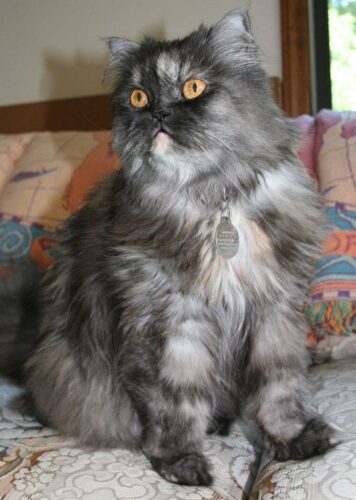 | ||
The Persian cat It is a cat of short morphological type. The head is round and flattened on top, with one nose short, ears small with rounded tips and eyes big and round. It leans on a neck short and thick and on a muscular body with a broad chest.
Their legs they are short, powerful and strong, with wide feet.
The tail it is thick and it is carried low: it is short but in proportion to the length of the cat, usually does not exceed the level of the shoulder blades. Too long a tail is even considered a foul.
The fur It is thick, with a silky cape and a bushy collar.
Regardless of the feline organism in question, the persian standard accepts a wide variety of colors fur. Some individuals are uniform in color (black, blue, chocolate, lilac, red, cream or white), while others have distinctive colors (striped, smoke, Chinchilla, silver, dorado, cameo o colourpoint).
The color of the coat determines the color of the eyes. These may include, white-coated individuals have blue eyes, gold or mint (one blue and one golden eye). The golden individuals, silvers and chinchillas have green or blue-green eyes. The colored dots have blue eyes.
Size and weight
- Male size: 25-40 cm.
- female size: 25-35 cm.
- Male weight: 3,5-5 kg
- female weight: 3 to 4 kg
Breed standard
The breed standards are documents produced by official bodies that list the conditions that a Persian must meet to be fully recognized as belonging to the breed.:
- Standard FIFé (Fédération Internationale Féline)
- Standard LOOF (Livre Officiel des Origines Félines)
- Standard AFC (Association Féline Canadienne)
- Standard TICA (The International Cat Association)
- Standard CFA (The Cat Fanciers’ Association)
- Standard GCCF (The Governing Council of the Cat Fancy)
Character and skills
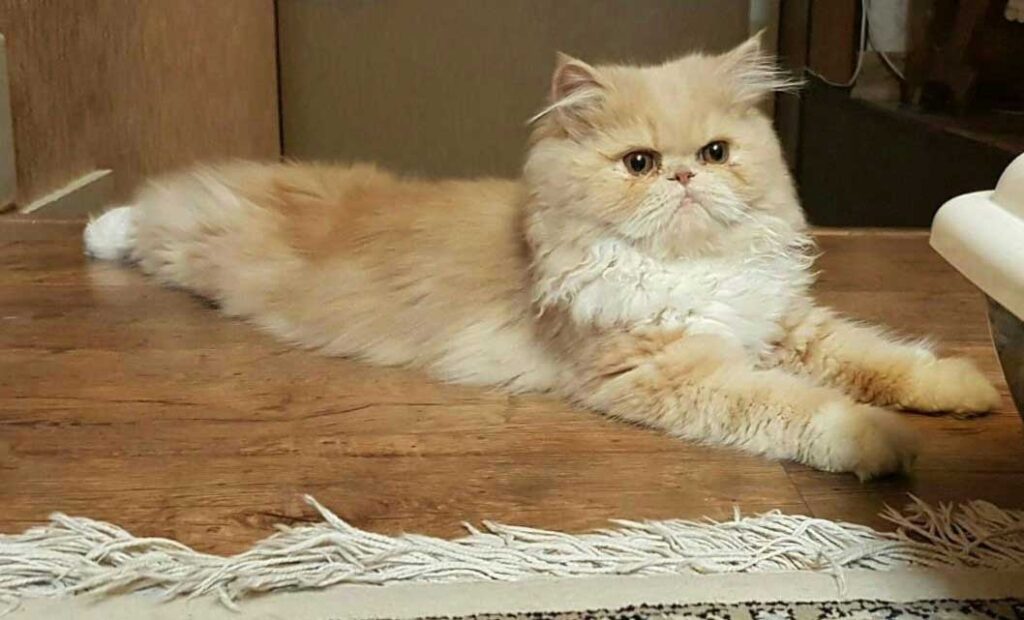
The Persian cat it is placid, calm and sedentary, which makes it a recommended breed of cat for life in a flat. This is especially true since, unlike many of his peers, does not have a systematic need to climb to the top, at risk of injury or damage. These may include, there is little risk of it climbing up the curtains or jumping onto the kitchen counter: the Persian prefers to stick to the floor or furniture that is more accessible to him. It also, their meows are as rare as they are discreet, which is also an appreciable advantage for living in a flat.
You do not necessarily need to have access to the outside, and this could be more dangerous than anything else. In fact, bred generation after generation to be the perfect indoor cat, he would be especially vulnerable outside his house to other animals encountered during his walks, as well as all the risks of accidents outside for a cat.
The Persian cat is famous for its delicacy. Affectionate and peaceful, they are usually very attached to their owners. But, although they love to be caressed, They are not the type of cats that approach you incessantly, as with other breeds.
They are sociable by nature and have no problem living with other dogs or people, and even with the children, as long as you are nice to them and are not over-treated. In effect, if he Persian it is not an aggressive cat, an overly animated child, a very playful dog or a slightly turbulent puppy can be a source of stress for this calm cat. In fact, a noisy and overly lively environment would not suit you: you need a quiet place to live and not subject to too frequent changes.
In short, their temperament makes them an ideal cat breed for seniors. On the other hand, although they quickly approach their humans and regular visitors to their home, tend to be more distant with strangers.
On the other hand, maybe because its claws don't wear out naturally when roaming around outside, they especially enjoy doing it. So, to avoid any laceration of the walls, the curtains or the furniture, providing one or more scratching posts and / or cat trees is strongly recommended. As for the toys, prefers those that are as soft as its fur.
Health
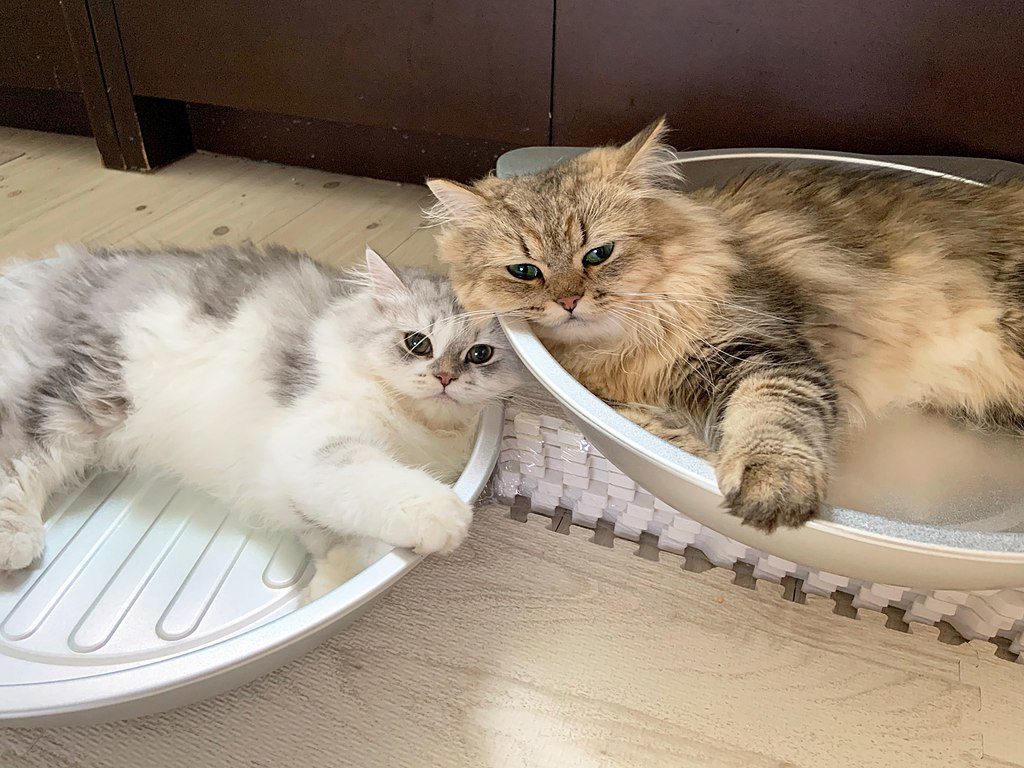
As a result of extensive breeding and crossbreeding in the past, the Persian cat is prone to health problems, especially genetic in nature. Much of these problems are due to the structure of the head. So, who wants to adopt a Persian you must be aware that this cat, especially “racial” but that has undergone considerable genetic selection, may be subject to numerous ailments.
You may have breathing difficulties or noisy breathing, due to your narrow nasal passages.
They can also suffer dental malocclusion (misalignment or deviation of the teeth) and / or gingivitis (gum infection).
They are also prone to a number of feline eye diseases, as the Progressive Retinal Atrophy (an incurable retinal disease leading to loss of vision in cats), the entropion (inward turning of the eyelid margins), the lacrimal gland prolapse (u “Eye Cherry”, that is to say, an inflammation of the third eyelid) wave renal polyquistosis (for which there is a genetic test).
The Persian cat it is also more prone than other breeds to Hip Dysplasia (which may require surgery) and to the hypertrophic cardiomyopathy (Ho Chi Minh City).
They are also prone to a number of skin diseases in cats.: cheyletiellosis, intertrigo of facial folds, primary seborrhea, had, etc.
Last, it is a breed of cat that fears heat.
In short, the Persian cat it is a fragile cat. For this reason, Among the questions to ask yourself before adopting a cat of this breed is that of veterinary expenses -especially unforeseen-, that can end up representing significant amounts. More than any other race, prevention is the key to keeping your cat in good health, especially through frequent check-ups with the vet. It also, It may be particularly advisable to take out medical insurance for your cat to cover any unforeseen events and avoid the risk of finding yourself in a difficult economic situation.
It also, puberty of Persian it's quite late, since it occurs around the 12 months of age, and reaches full maturity around the 2 years. Litters usually consist of 2 to 3 kittens, but females rarely give birth to kittens when they are over 6 years. Your fertility period is, Therefore, more restricted than many other breeds, they can keep having kittens almost to death.
Any owner considering raising their cat should be aware that childbirth is often complicated in the case of cats. Persians. This is because, in particular, to the enormous size of kittens' heads. In fact, the mortality rate at birth of Persian kittens is higher than that of most other breeds. More than any other race, it is extremely important to monitor the delivery of the cat, as it is often difficult and not uncommon for the mother to have to undergo a caesarean section.
Last, for genetic reasons, deafness is more common in white cats with blue eyes, either Persians or other races. So, it is advisable not to plan a marriage between two individuals with white fur and blue eyes, or even only with blue eyes, since the probability of obtaining deaf or partially deaf kittens is then particularly high.
Life expectancy
10 to 15 years
Grooming
The Persian cat It is a breed of high maintenance cats, and anyone considering adopting a representative of this breed should be prepared to spend some time caring for them.
In fact, the toilet (brushed, combed and washed) it is a task as daily as it is necessary, since the length of the hair favors the rapid formation of knots and tangles. So, it is necessary to detangle your cat's fur every day, and the ideal is to take your cat to a professional groomer regularly; the exact frequency depends on the cat and its lifestyle, as well as the level of demand of the owner. It is also advisable to bathe your cat once a month.
If your cat has access to the outdoors, caring for his coat is even more demanding, as leaves and plants soon adhere to it, as well as dirt and mud. The litter box also requires special attention, as it can start to get angry if too much sand is deposited on the coat or under the paws.
It also, the Persian she loses a lot of hair all the time: living with him means accepting this fact! But, this detachment can vary significantly depending on its origin. So, this parameter can be taken into account when looking for a kitten Persian, favouring, for example, a line where the phenomenon is not too pronounced. In any case, hair loss is obviously even greater during shedding periods, in spring and autumn.
It also, their eyes cry frequently, so you have to clean them regularly. It is advisable to do it once a day (or less if they only run a little), simply wetting the area around them with a glove and warm water.
A cat was not necessarily born to be handled. But, a Persian cat needs to be handled a lot, due to its high maintenance needs. So, even more than with other breeds, it is important to get them used to being handled from an early age without reacting inappropriately.
Food
The diet of the Persian cat it is relatively simple, since he loves croquettes and is not very demanding. However, it is preferable to opt for quality industrial croquettes.
On the other hand, due to its low level of activity, this breed of cat is prone to obesity. So, it is advisable to pay attention to the daily amount distributed to avoid the risk of the cat becoming overweight or obese. This is especially true if the cat is older. (and, Therefore, less active) and / or if he has been neutered (whatever the race, a neutered cat is more likely to gain weight).
For sale "Persian cat"
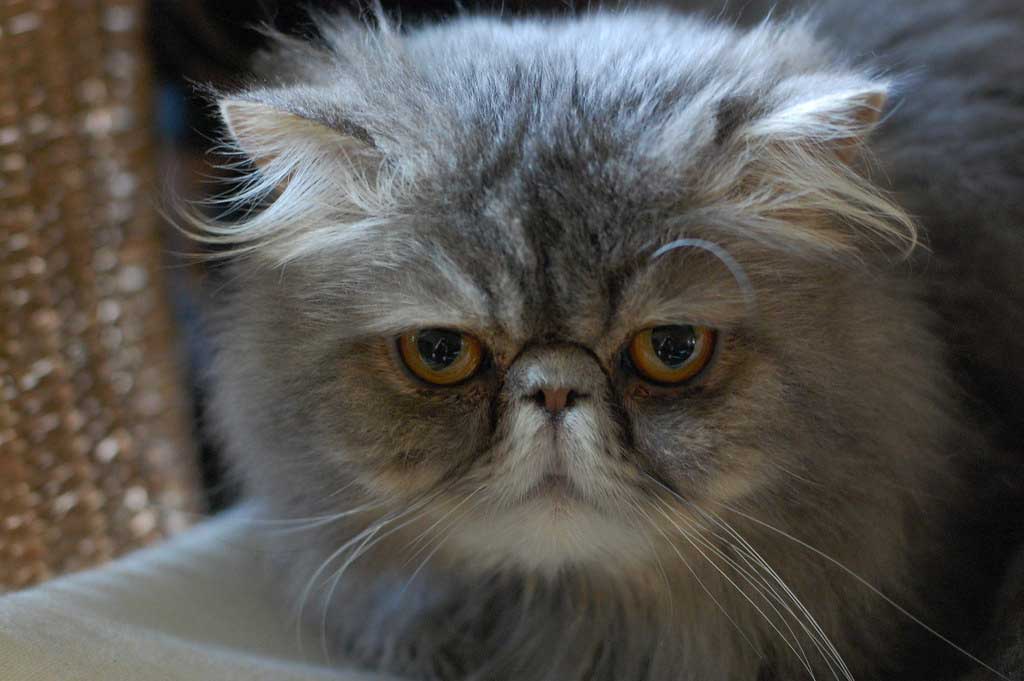
The price range to adopt a Persian cat it is especially wide, since it oscillates between 400 and 2500 EUR. The sex of the kitten influences its price, since a female costs much more than a male. The fur, but above all the pedigree and the titles of the parents, they also have a determining influence.
In general, the kittens that cost between 400 and 600 euros come from amateur or undeclared farms, so they are sold by individuals. They can also come from declared breeders that produce kittens in large quantities.. It is advisable to be especially attentive in these cases, because kittens often haven't had a DNA test, for example against the PKD (Poliquistosis Renal Dominante). It also, these kittens are often sold without LOOF registration, that is to say, no pedigree: they are not purebred kittens, but kittens “kind of lost”.
The kittens that are sold between 600 and 1.400 euros usually come from official farms: meet the breed standard and have been tested (like his parents, even before breeding) to detect the most common genetic diseases.
Last, prices above 1400 euros refer to kittens of excellent lines and intended for breeding. They refer mostly to breeders. It also, a certain number of these cats are bought abroad, which implies significant repatriation costs. These expenses derived from the purchase of the parents explain, in part, that the prices of kittens that give birth are quite high, even though they are meant simply for company.
It also, beyond acquisition cost, who considers adopting a Persian cat you should take into account that this breed is much more expensive than others. This is mainly due to their high maintenance needs and poor health..
|
|
|
|---|
